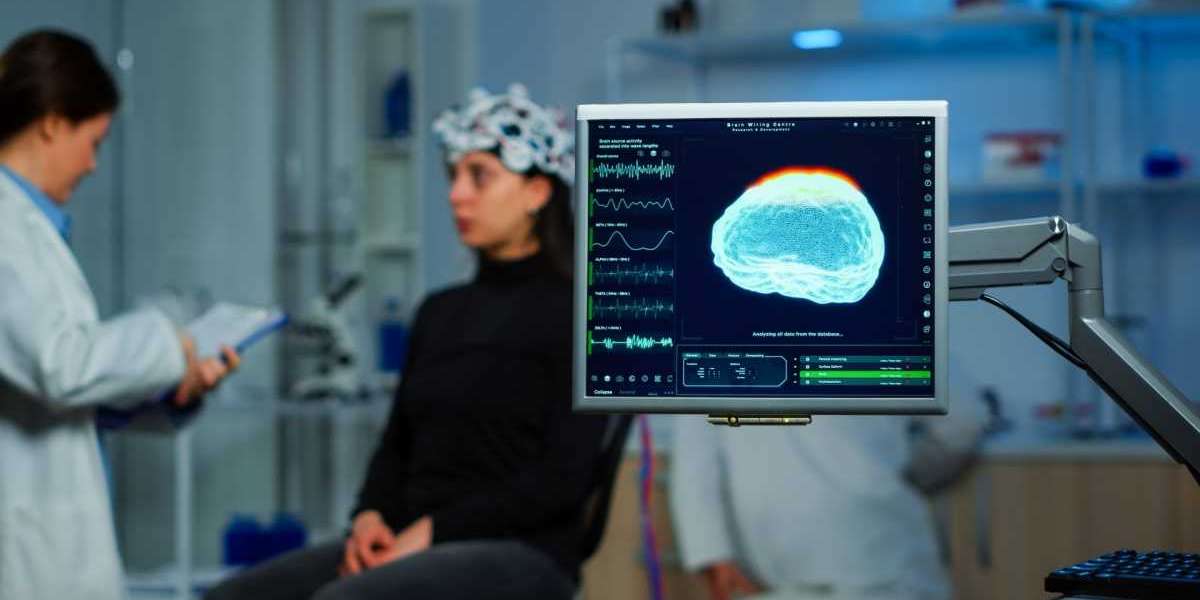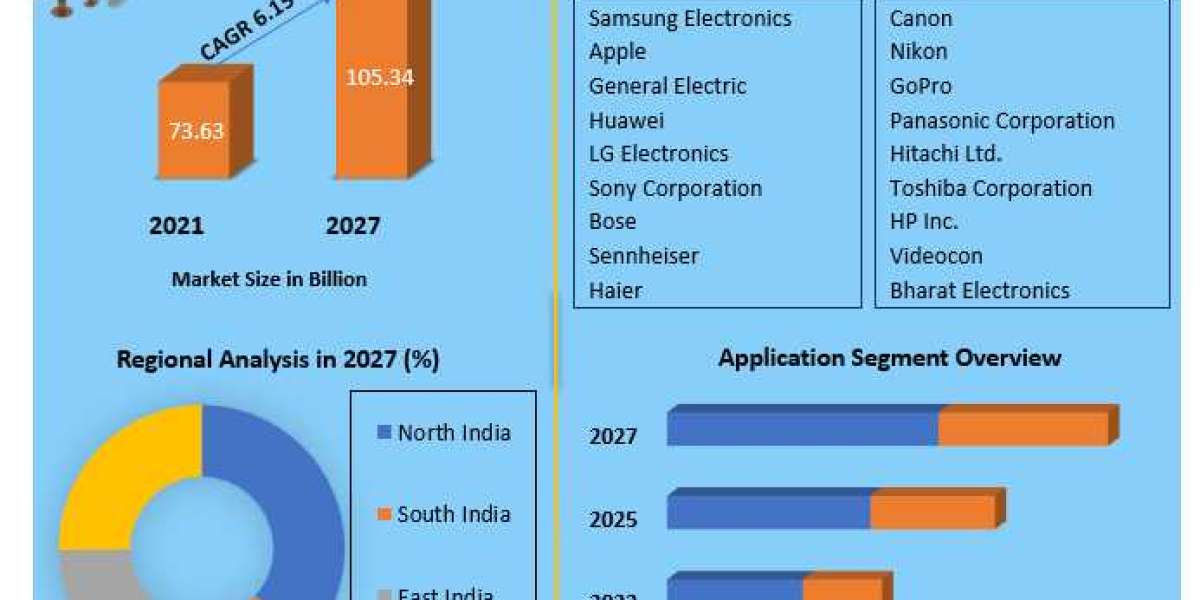Global neuromodulation market is projected to witness a CAGR of 10.28% during the forecast period 2024-2031F, growing from USD 5.23 billion in 2023 to USD 11.44 billion in 2031F. The market's growth is boosted by the increasing prevalence of various chronic neurological conditions, including Parkinson’s Disease, epilepsy, chronic pain, migraine, and others, rising emphasis on developing advanced neuromodulation technologies and increasing awareness about various advantages of neuromodulation therapies.
The increasing prevalence of different neurological conditions is a major global neuromodulation market trend. The rising incidence of individuals suffering from chronic pain, among others, is one of the major factors bolstering the demand for neuromodulation therapies and devices. According to the estimates of the US Pain Foundation, approximately 51.6 million adults, almost 21% of the population of the United States, are living with chronic pain, propelling the requirement for neuromodulation devices as they aid in pain management and treatment of the condition. Using implanted restorative neuromodulation devices re-establishes the strength and stability of the spine by providing continuous contractions to the multifidus muscles, resulting in reduced pain.
The growing efforts by various market players towards introducing advanced and novel therapeutic solutions to enhance patient comfort and convenience is one of the major factors boosting the global neuromodulation market size. For instance, in March 2024, Axonics announced that their Axonics R20 rechargeable sacral neuromodulation (SNM) system received CE-mark approval. The R20 provides patients and physicians with expanded magnetic resonance imaging (MRI) labeling and enhanced programming capabilities. R20 underscores Axonics’ commitment to innovation and provides a significant breakthrough for rechargeable neuromodulation devices.
Such efforts allow the development of neuromodulation devices that support the treatment of diseases and disorders for which neuromodulation was not previously used. In March 2023, GreyMatters's Prism technology became the first neuromodulation system to receive approval from the Food and Drug Administration (FDA) as an adjunct PTSD treatment. GrayMatters aims to use deidentified data collected throughout Prism treatments to develop patient management tools and treatment predictors.
Research and Development Activities Support Global Neuromodulation Market Growth
The growing efforts by various organizations and companies towards research and development activities are expected to support the market expansion in the coming years. Such efforts bolster the development of advanced technologies and products, which are then approved for use by suitable regulatory bodies. For instance, in January 2024, Neurolief’s Relivion received approval from the Japanese Ministry of Health, Labor and Welfare (MHLW) as a migraine therapy in Japan. The device uses multi-channel and non-invasive brain neuromodulation technology and stimulates both trigeminal and occipital nerve branches, neural pathways that are responsible for migraine. RelivionMG, which is used for treating acute migraines, received approval from the U.S. FDA.
Research and development activities enhance patient convenience and aid in developing high-quality products to ensure better patient outcomes. They allow the translation of ideas, aiding healthcare professionals in addressing the different requirements of their patients and making therapies and products accessible, affordable, and acceptable. Due to the growing burden of different neurological conditions, including migraine and Parkinson’s, the investments in research and development activities are increasing, thus bolstering product innovation and positively influencing the expansion of the market.
Increasing Prevalence of Neurological Conditions Boosts Global Neuromodulation Market Demand
According to the estimates of the World Health Organization (WHO), more than 50 million people across the globe are living with epilepsy, which is one of the most common neurological diseases. The approved neuromodulation therapies for treating adults with drug-resistant focal epilepsy include responsive neurostimulation, deep brain stimulation of the anterior nucleus of the thalamus, and vagus nerve stimulation.
The rising number of different neurological conditions such as migraine, epilepsy, and chronic pain, coupled with increasing awareness and rate of diagnosis, is propelling the requirement for neuromodulation devices across the globe. This is because treating several disorders relies upon creating focal points or biological and chronic noncurative pharmacologic treatments. The broad therapeutic potential of neuromodulation and ongoing improvements in biotechnology are providing lucrative growth opportunities to the market. Moreover, neuromodulation devices are capable of stimulating responses in conditions where previously they weren’t available, including the cochlear implant, which is used to restore hearing for deaf patients. Thus, as the prevalence of different neurological conditions increases, the demand for neuromodulation devices is expected to rise, supporting the expansion of the market.
North America to Account for Significant Global Neuromodulation Market Share
The strong presence of several leading market players, rising emphasis on developing novel therapeutics solutions, and growing requirement for neuromodulation devices due to the increasing prevalence of neurological disorders are major factors augmenting the market growth in North America. The rising investments by leading market players in research and development activities provide lucrative growth opportunities for the market as these activities support the innovation of products with advanced technologies.
As per the estimates of the American Migraine Foundation, approximately 39 million Americans are living with migraine. Due to the rising prevalence of such conditions, the requirement for different treatment solutions is increasing, including neuromodulation devices. The high rate of adoption of advanced and novel technologies in the region, coupled with increased investments in the biopharmaceutical and pharmaceutical sectors, is further propelling the growth of the market.
Parkinson’s Disease Accounts for Significant Global Neuromodulation Market Share
The increasing prevalence of Parkinson’s disease in various regions across the globe is providing lucrative growth opportunities to the market. According to the estimates of the Parkinson’s Foundation, approximately 90,000 individuals are diagnosed with Parkinson’s disease every year in the United States. Parkinson’s disease is characterized by various motor symptoms such as postural instability, rigidity, tremors, and bradykinesia. The physiological dysfunction of the condition involves basal ganglia pathways that contribute towards non-motor and motor symptoms, the pathways can be influenced by neural network modulations with the help of magnetic or electrical fields. Deep brain stimulation is often used for treating the condition by applying small pulses of electrical currents at various locations in the brain using implanted electrodes. The stimulations then aid in restoring the circuit balance that had been disrupted by the condition. They alleviate tremors and reduce dyskinesias and stiffness and are highly effective against on and off fluctuations. Thus, bolstering the demand for neuromodulation devices. Additionally, rising efforts towards the development of noninvasive neuromodulation technologies as potential treatments for Parkinson’s disease is expected to provide lucrative growth opportunities to the market in the coming years.
Future Market Scenario (2024 – 2031F)
According to the global neuromodulation market analysis, the market is expected to grow significantly over the forecast period. The growth will be supported by the increase in the number of cases of various neurological diseases such as migraine, rising collaborations between the key players of the market, and growing investments towards research activities by various research institutions across the globe. For instance, the University of Calgary is conducting an interventional study to assess the working of a novel neuromodulation device for acute migraine attacks in children and adolescents. The randomized clinical trial aims to determine the acceptability and feasibility of implementing phase III RCT for treating adolescents and children suffering from acute migraine attacks. The study aims to gather preliminary safety and efficacy data on the utilization of REN and is expected to conclude in August 2024.
Over the coming years, the advancements in the understanding of mechanism of action of stimulation and neuroanatomical networks along with advancements in miniaturization and material sciences will bolster the utilization of neuromodulation devices. The future modulation methods are expected to aim for reduced invasiveness and high specificity.
Report Scope
“Neuromodulation Market Assessment, Opportunities and Forecast, 2017-2031F”, is a comprehensive report by Markets and data, providing in-depth analysis and qualitative and quantitative assessment of the current state of global neuromodulation market, industry dynamics, and challenges. The report includes market size, segmental shares, growth trends, opportunities, and forecast between 2024 and 2031F. Additionally, the report profiles the leading players in the industry, mentioning their respective market share, business models, competitive intelligence, etc.
Click Here:
Global neuromodulation market is projected to witness a CAGR of 10.28% during the forecast period 2024-2031F, growing from USD 5.23 billion in 2023 to USD 11.44 billion in 2031F. The market's growth is boosted by the increasing prevalence of various chronic neurological conditions, including Parkinson’s Disease, epilepsy, chronic pain, migraine, and others, rising emphasis on developing advanced neuromodulation technologies and increasing awareness about various advantages of neuromodulation therapies.
The increasing prevalence of different neurological conditions is a major global neuromodulation market trend. The rising incidence of individuals suffering from chronic pain, among others, is one of the major factors bolstering the demand for neuromodulation therapies and devices. According to the estimates of the US Pain Foundation, approximately 51.6 million adults, almost 21% of the population of the United States, are living with chronic pain, propelling the requirement for neuromodulation devices as they aid in pain management and treatment of the condition. Using implanted restorative neuromodulation devices re-establishes the strength and stability of the spine by providing continuous contractions to the multifidus muscles, resulting in reduced pain.
The growing efforts by various market players towards introducing advanced and novel therapeutic solutions to enhance patient comfort and convenience is one of the major factors boosting the global neuromodulation market size. For instance, in March 2024, Axonics announced that their Axonics R20 rechargeable sacral neuromodulation (SNM) system received CE-mark approval. The R20 provides patients and physicians with expanded magnetic resonance imaging (MRI) labeling and enhanced programming capabilities. R20 underscores Axonics’ commitment to innovation and provides a significant breakthrough for rechargeable neuromodulation devices.
Such efforts allow the development of neuromodulation devices that support the treatment of diseases and disorders for which neuromodulation was not previously used. In March 2023, GreyMatters's Prism technology became the first neuromodulation system to receive approval from the Food and Drug Administration (FDA) as an adjunct PTSD treatment. GrayMatters aims to use deidentified data collected throughout Prism treatments to develop patient management tools and treatment predictors.
Research and Development Activities Support Global Neuromodulation Market Growth
The growing efforts by various organizations and companies towards research and development activities are expected to support the market expansion in the coming years. Such efforts bolster the development of advanced technologies and products, which are then approved for use by suitable regulatory bodies. For instance, in January 2024, Neurolief’s Relivion received approval from the Japanese Ministry of Health, Labor and Welfare (MHLW) as a migraine therapy in Japan. The device uses multi-channel and non-invasive brain neuromodulation technology and stimulates both trigeminal and occipital nerve branches, neural pathways that are responsible for migraine. RelivionMG, which is used for treating acute migraines, received approval from the U.S. FDA.
Research and development activities enhance patient convenience and aid in developing high-quality products to ensure better patient outcomes. They allow the translation of ideas, aiding healthcare professionals in addressing the different requirements of their patients and making therapies and products accessible, affordable, and acceptable. Due to the growing burden of different neurological conditions, including migraine and Parkinson’s, the investments in research and development activities are increasing, thus bolstering product innovation and positively influencing the expansion of the market.
Increasing Prevalence of Neurological Conditions Boosts Global Neuromodulation Market Demand
According to the estimates of the World Health Organization (WHO), more than 50 million people across the globe are living with epilepsy, which is one of the most common neurological diseases. The approved neuromodulation therapies for treating adults with drug-resistant focal epilepsy include responsive neurostimulation, deep brain stimulation of the anterior nucleus of the thalamus, and vagus nerve stimulation.
The rising number of different neurological conditions such as migraine, epilepsy, and chronic pain, coupled with increasing awareness and rate of diagnosis, is propelling the requirement for neuromodulation devices across the globe. This is because treating several disorders relies upon creating focal points or biological and chronic noncurative pharmacologic treatments. The broad therapeutic potential of neuromodulation and ongoing improvements in biotechnology are providing lucrative growth opportunities to the market. Moreover, neuromodulation devices are capable of stimulating responses in conditions where previously they weren’t available, including the cochlear implant, which is used to restore hearing for deaf patients. Thus, as the prevalence of different neurological conditions increases, the demand for neuromodulation devices is expected to rise, supporting the expansion of the market.
North America to Account for Significant Global Neuromodulation Market Share
The strong presence of several leading market players, rising emphasis on developing novel therapeutics solutions, and growing requirement for neuromodulation devices due to the increasing prevalence of neurological disorders are major factors augmenting the market growth in North America. The rising investments by leading market players in research and development activities provide lucrative growth opportunities for the market as these activities support the innovation of products with advanced technologies.
As per the estimates of the American Migraine Foundation, approximately 39 million Americans are living with migraine. Due to the rising prevalence of such conditions, the requirement for different treatment solutions is increasing, including neuromodulation devices. The high rate of adoption of advanced and novel technologies in the region, coupled with increased investments in the biopharmaceutical and pharmaceutical sectors, is further propelling the growth of the market.
Parkinson’s Disease Accounts for Significant Global Neuromodulation Market Share
The increasing prevalence of Parkinson’s disease in various regions across the globe is providing lucrative growth opportunities to the market. According to the estimates of the Parkinson’s Foundation, approximately 90,000 individuals are diagnosed with Parkinson’s disease every year in the United States. Parkinson’s disease is characterized by various motor symptoms such as postural instability, rigidity, tremors, and bradykinesia. The physiological dysfunction of the condition involves basal ganglia pathways that contribute towards non-motor and motor symptoms, the pathways can be influenced by neural network modulations with the help of magnetic or electrical fields. Deep brain stimulation is often used for treating the condition by applying small pulses of electrical currents at various locations in the brain using implanted electrodes. The stimulations then aid in restoring the circuit balance that had been disrupted by the condition. They alleviate tremors and reduce dyskinesias and stiffness and are highly effective against on and off fluctuations. Thus, bolstering the demand for neuromodulation devices. Additionally, rising efforts towards the development of noninvasive neuromodulation technologies as potential treatments for Parkinson’s disease is expected to provide lucrative growth opportunities to the market in the coming years.
Future Market Scenario (2024 – 2031F)
According to the global neuromodulation market analysis, the market is expected to grow significantly over the forecast period. The growth will be supported by the increase in the number of cases of various neurological diseases such as migraine, rising collaborations between the key players of the market, and growing investments towards research activities by various research institutions across the globe. For instance, the University of Calgary is conducting an interventional study to assess the working of a novel neuromodulation device for acute migraine attacks in children and adolescents. The randomized clinical trial aims to determine the acceptability and feasibility of implementing phase III RCT for treating adolescents and children suffering from acute migraine attacks. The study aims to gather preliminary safety and efficacy data on the utilization of REN and is expected to conclude in August 2024.
Over the coming years, the advancements in the understanding of mechanism of action of stimulation and neuroanatomical networks along with advancements in miniaturization and material sciences will bolster the utilization of neuromodulation devices. The future modulation methods are expected to aim for reduced invasiveness and high specificity.
Report Scope
“Neuromodulation Market Assessment, Opportunities and Forecast, 2017-2031F”, is a comprehensive report by Markets and data, providing in-depth analysis and qualitative and quantitative assessment of the current state of global neuromodulation market, industry dynamics, and challenges. The report includes market size, segmental shares, growth trends, opportunities, and forecast between 2024 and 2031F. Additionally, the report profiles the leading players in the industry, mentioning their respective market share, business models, competitive intelligence, etc.
Click Here: https://www.marketsandata.com/industry-reports/neuromodulation-marketa








